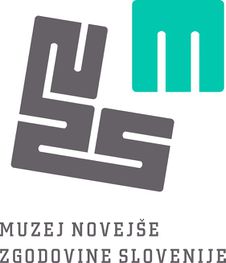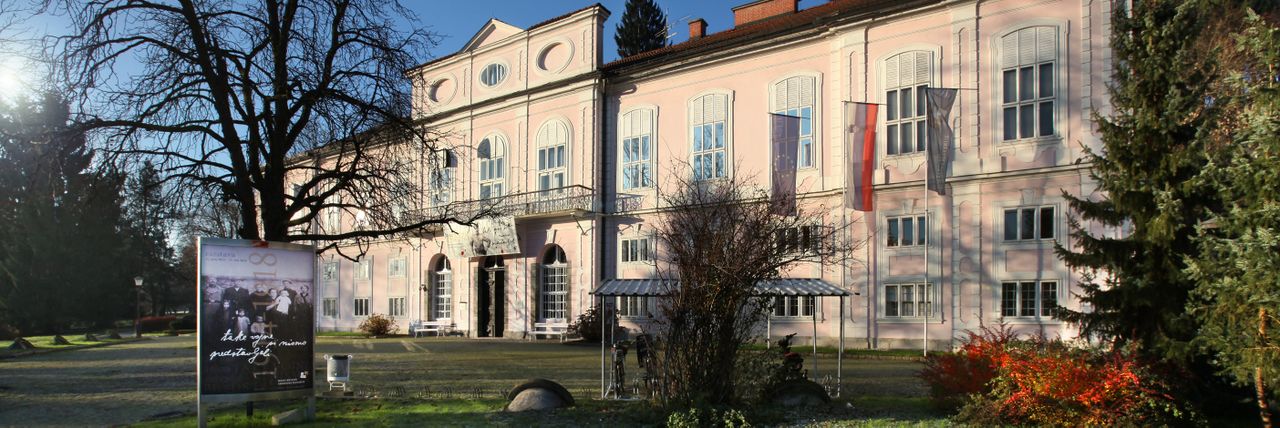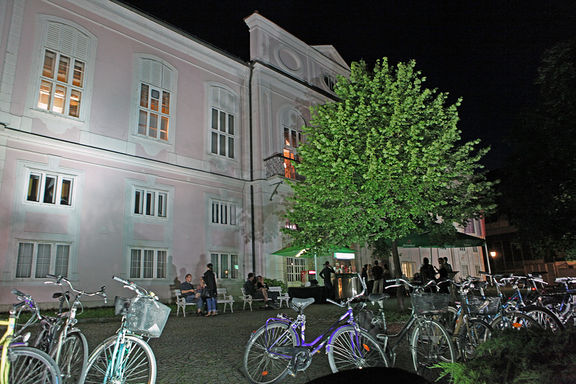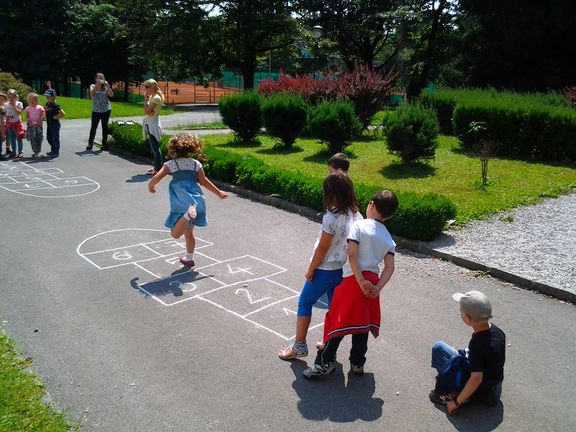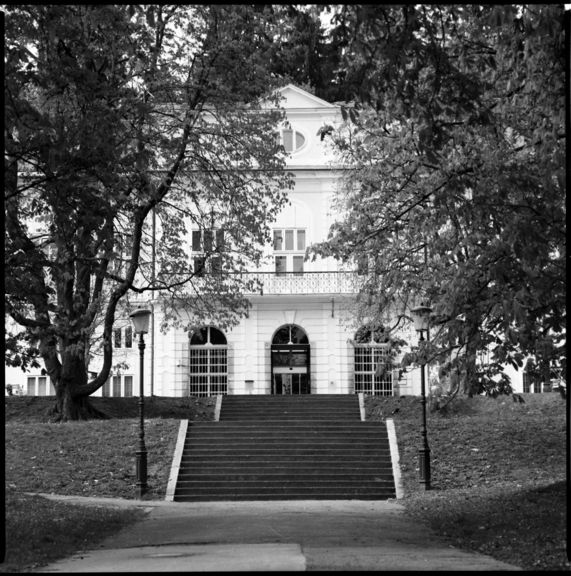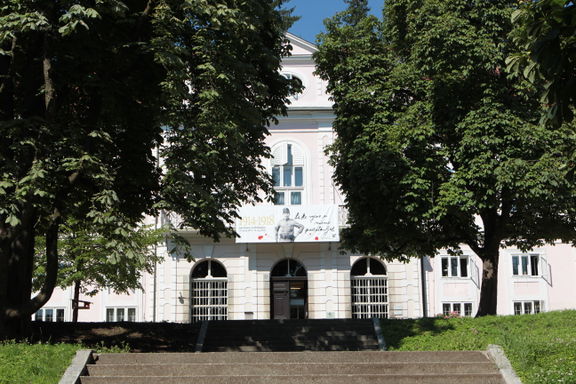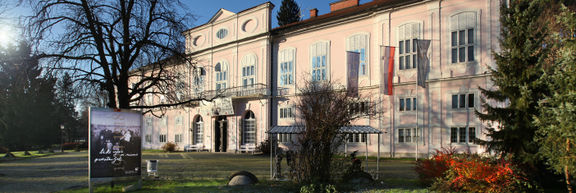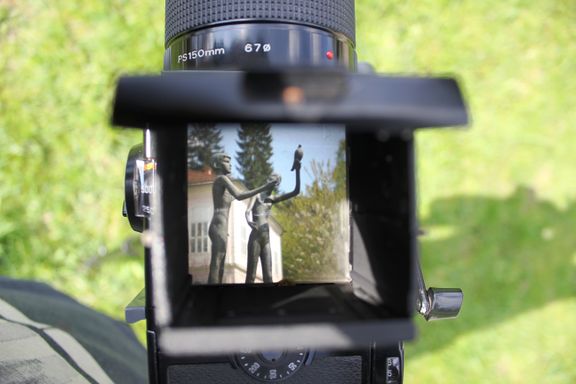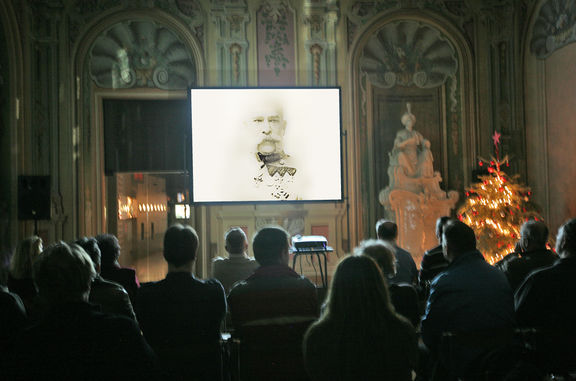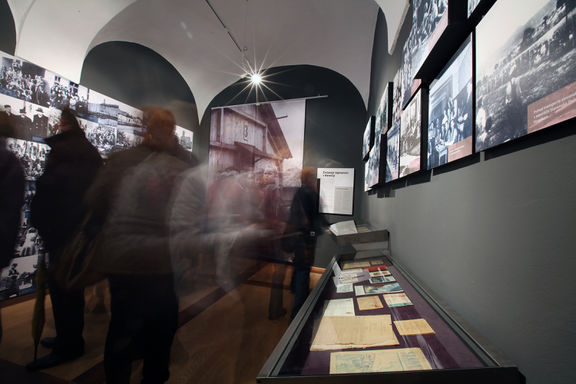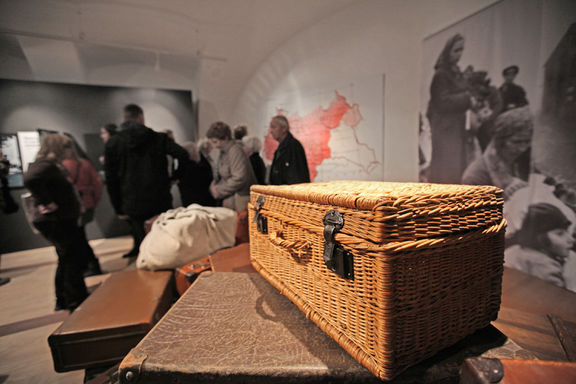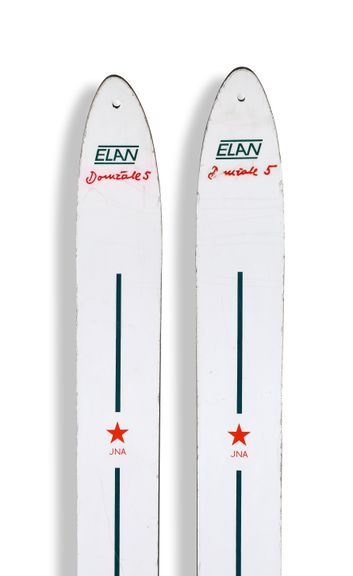Difference between revisions of "National Museum of Contemporary History"
(done) |
(ok) |
||
| Line 1: | Line 1: | ||
{{Article | {{Article | ||
| − | | status = | + | | status = TOPROOFREAD NIFERTIK! |
| maintainer = Admin | | maintainer = Admin | ||
}} | }} | ||
| Line 41: | Line 41: | ||
{{wide image|National Museum of Contemporary History 2014 01.jpg}} | {{wide image|National Museum of Contemporary History 2014 01.jpg}} | ||
| − | The National Museum of Contemporary History is a state museum | + | The National Museum of Contemporary History is a state museum for the 20th-century Slovene history. It houses a fine art and documentation department, a photographic department containing more than a million original photographs, a conservation–restoration workshop, and a [[National Museum of Contemporary History Library|library]]. |
| − | + | Its collections range from World Wars I and II, as well as from the period between the wars, the era of socialism, and the later formation of the new Slovene state in the 1990s. It has a [[National Museum of Contemporary History, Brestanica Unit|branch in Brestanica]] in the [[Rajhenburg Castle]]. In 2017 the Open Depot exhibition of the three national museums opened in the [[Park of Military History Pivka]]. | |
}} | }} | ||
| Line 55: | Line 55: | ||
== Exhibitions == | == Exhibitions == | ||
| − | Of particular note is the permanent exhibition ''Slovenes in the 20th Century'', opened in 1996 and revised several times, which illustrates the history of Slovenes from 1914 until the present day. The exhibition presents Slovene economic, political, and cultural history in its broadest sense. In addition to turning points in history, such as wars and the foundation of the new state, the exhibition also attempts to illustrate everyday life alongside historical developments | + | Of particular note is the permanent exhibition ''Slovenes in the 20th Century'', opened in 1996 and revised several times, which illustrates the history of Slovenes from 1914 until the present day. The exhibition presents Slovene economic, political, and cultural history in its broadest sense. In addition to turning points in history, such as wars and the foundation of the new state, the exhibition also attempts to illustrate everyday life alongside historical developments. |
| − | Some previous temporary exhibitions include ''We never imagined such a war'' (World War I through personal stories, 2014), ''You get the Moon, we get the Gold'' on the 1970 FIBA World Championship hosted by Ljubljana (2013), ''Unite, Unite Poor Peasants: persecution of farmers in Slovenia 1945–1955'' (2009), ''The World of Music in the 1960s – on the 90th Anniversary of the Photojournalist Edi Šelhaus'' (2009) about the first Yugoslav jazz festivals between 1960 and 1963 and festivals of popular songs in the 1960s, and memorial exhibitions dedicated to [[Jože Pučnik]] and [[Janez Drnovšek]] (2008). | + | Some previous temporary exhibitions include ''The Life in Nazi Concentration Camps'' (2020), ''We never imagined such a war'' (World War I through personal stories, 2014), ''You get the Moon, we get the Gold'' on the 1970 FIBA World Championship hosted by Ljubljana (2013), ''Unite, Unite Poor Peasants: persecution of farmers in Slovenia 1945–1955'' (2009), ''The World of Music in the 1960s – on the 90th Anniversary of the Photojournalist Edi Šelhaus'' (2009) about the first Yugoslav jazz festivals between 1960 and 1963 and festivals of popular songs in the 1960s, and memorial exhibitions dedicated to [[Jože Pučnik]] and [[Janez Drnovšek]] (2008). |
In 2013, the National Museum of Contemporary History hosted the popular ''GOTO 1982'' exhibition on computer history. The exhibits came from the [[Cyberpipe#Computer_museum|Slovene Computer Museum]], the [[Technical Museum of Slovenia]], Peek&Poke Museum from Croatia, and [[ARNES, Academic and Research Network of Slovenia|Arnes Institute]]. | In 2013, the National Museum of Contemporary History hosted the popular ''GOTO 1982'' exhibition on computer history. The exhibits came from the [[Cyberpipe#Computer_museum|Slovene Computer Museum]], the [[Technical Museum of Slovenia]], Peek&Poke Museum from Croatia, and [[ARNES, Academic and Research Network of Slovenia|Arnes Institute]]. | ||
Revision as of 08:29, 17 October 2020
-
to
27 Nov 2018
19 Jan 2019
The exhibition In Search of Freedom 1968-2018, prepared by the Beletrina Publishing Institute, National Museum of Contemporary History, The History Meeting House, Warsaw, and EUROM Barcelona, supported by the CMEPIUS - Centre of the Republic of Slovenia for Mobility and European Educational and Training Programmes,
-
to
28 Sep 2018
28 Oct 2018
The exhibition The history revisited. Doctor Mario Cordaro and the artists from Slovenia and Croatia at the concentration camp in Gonars 1942–1943, in cooperation with the National Museum of Contemporary History
-
to
16 Aug 2018
17 Aug 2018
Radio-Television Slovenia (RTV Slovenia) presents three documentary films The Breakthrough at Kobarid, Galician Planes in Blood Bath, and Ozadja prestolonaslednikove smrti, all directed by Valentin Pečenko, featuring Valentin Pečenko and Marko Štepec (National Museum of Contemporary History) as guest speakers, at the scientific symposium World War I Through the Eyes of Poles and Slovenes, supported by the Embassy of the Republic of Slovenia Warsaw,
-
to
17 May 2018
13 Jan 2019
The exhibition What Remains: Traces of Refugees, featuring refugee objects from the National Museum of Contemporary History collection (Being Refugee: A European Narrative project),
-
8 Jun 2016
Museums and their role in the society through the EMEE project, a lecture by Kaja Širok and Urška Purg from the National Museum of Contemporary History,
-
to
18 Jan 2014
20 Apr 2014
The exhibition 1914, organised in the framework of Riga - the European Capital of Culture, featuring works by France Kralj and Tone Kralj (Božidar Jakac Gallery), Fran Tratnik (National Museum of Contemporary History), and Ivan Vavpotič (National Gallery of Slovenia)
History
The National Museum of Contemporary History originated in 1944 as the Scientific Institute of the Executive Committee of the National Liberation Front (IOOF) and subsequently became the Museum of National Liberation (1948). In 1952, it was relocated to Cekin Mansion, situated in Ljubljana's Tivoli Park, where it still resides today. In 1962, it became the Museum of the People's Revolution, acquiring its current name only in 2003.
Collections
The museum's collections include weapons, military equipment, numismatics, textiles, medals, and decorations, plaques, postcards, photographs, films and videos, badges and signs, rubber stamps, seals and printing blocks, philately, and cartography. A fine art collection, a collection of personal items and documents (among them the deck of tarock cards, drawn by the artist and architect Boris Kobe in Nazi concentration camps), and of gifts to the former president Milan Kučan are worth mentioning as well. In 2009, the Slovene Police donated about 30 pieces of weapons from World War II and from other violent skirmishes in Slovene history.
One of the most impressive collections is the comprehensive archive of the photo-reporter Edi Šelhaus (1919–2011) with 2,026 original b/w negatives from World War II and over 137,000 original b/w and colour photographs as well as slides and negatives, donated by the author (in 2000) and his main employee, the Delo Publishing House (in 2009).
Exhibitions
Of particular note is the permanent exhibition Slovenes in the 20th Century, opened in 1996 and revised several times, which illustrates the history of Slovenes from 1914 until the present day. The exhibition presents Slovene economic, political, and cultural history in its broadest sense. In addition to turning points in history, such as wars and the foundation of the new state, the exhibition also attempts to illustrate everyday life alongside historical developments.
Some previous temporary exhibitions include The Life in Nazi Concentration Camps (2020), We never imagined such a war (World War I through personal stories, 2014), You get the Moon, we get the Gold on the 1970 FIBA World Championship hosted by Ljubljana (2013), Unite, Unite Poor Peasants: persecution of farmers in Slovenia 1945–1955 (2009), The World of Music in the 1960s – on the 90th Anniversary of the Photojournalist Edi Šelhaus (2009) about the first Yugoslav jazz festivals between 1960 and 1963 and festivals of popular songs in the 1960s, and memorial exhibitions dedicated to Jože Pučnik and Janez Drnovšek (2008).
In 2013, the National Museum of Contemporary History hosted the popular GOTO 1982 exhibition on computer history. The exhibits came from the Slovene Computer Museum, the Technical Museum of Slovenia, Peek&Poke Museum from Croatia, and Arnes Institute.
International cooperation
The museum also prepares exhibitions for touring, for example, Kobe’s tarock. The concentration camps’ narrative, the exhibition The Making of Slovenia (toured to Dublin in 2002), and the exhibition Culture in the National Liberation War (traveled to Sgonicco in 2003). The exhibition entitled There over the Hills is like here, European Themes of Slovene History, accompanied by multilingual catalogues, also toured. The borrowing of museum objects and documents is possible in accordance with state regulations.
European project
The museum has engaged in the conception of EU-funded project since 2012. The recent ones include Identity on the Line (I-ON), exploring the long-term consequences of different migration processes, and IMPROVISA - Life in Motion, addressing the accessibility of heritage contents through the use of mobile technologies. The first one, EuroVision: Museums Exhibiting Europe (EMEE) (2012 to 2016) aimed to establish new creative concepts for audience development.
Publications and lectures
The temporary exhibitions are accompanied by catalogues. In addition, the museum publishes monographs on Slovene recent history, like The Making of Slovenia (in English) in 2009, and video and electronic media, such as Art Collection: Authors and their Works (in Slovenian and English) in 2007.
The museum runs an intense public progrmme of lectures, round tables, workshops, and screenings in the renovated Knights' Hall which can be rented as well.
See also
- Cekin Mansion
- National Museum of Contemporary History Library
- National Museum of Contemporary History, Brestanica Unit
- Institute of Contemporary History
- Museums and memorials related to World War I
- Museums and memorials related to World War II
External links
- National Museum of Contemporary History website
- National Museum of Contemporary History on Virtual Guide to Slovene Museums and Galleries



